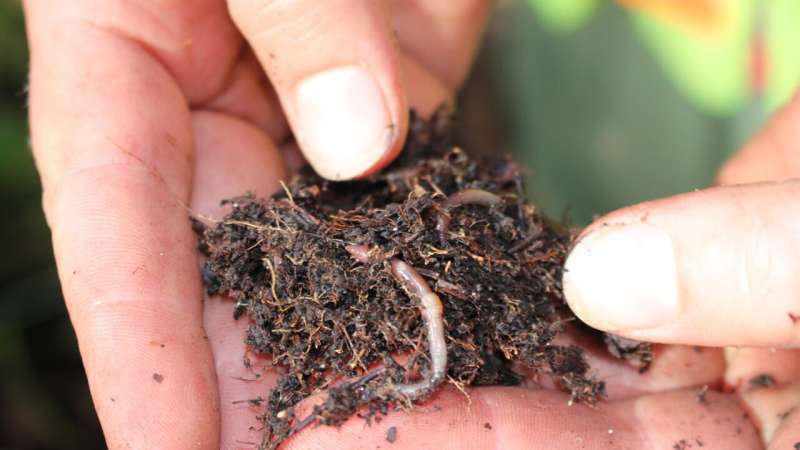This article has been reviewed according to Science X's editorial process and policies. Editors have highlighted the following attributes while ensuring the content's credibility:
fact-checked
trusted source
proofread
Invasive earthworms are changing the soil in Canada's boreal forests

Invasive earthworms are changing the makeup of soil in Canada's boreal forests, new University of Alberta research shows.
The study is one of the first to highlight how non-native earthworms are directly altering the soil microbial community in the country's boreal forests. The research is published in the journal SOIL.
The wrigglers are inducing shifts in the community composition of bacteria and fungi that live in the soil, which is potentially concerning, says Justine Lejoly, who conducted the research to earn a Ph.D. in soil science from the Faculty of Agricultural, Life & Environmental Sciences.
"That means the functioning of the microbial communities is likely changing as well," affecting vital services the soil performs, she notes.
As the main drivers of carbon and nutrient cycling, these microbes can help plants access important nutrients and also participate in soil carbon storage.
"As earthworm invasion progresses in these boreal systems, these changes in the soil microbial communities may have an impact on forests at a large scale," adds Lejoly.
Unexpected findings
The researchers analyzed soil samples from multiple forest sites in Alberta and Quebec. The study showed that earthworms affected fungal and bacterial communities in the first layer of mineral soil, just below the organic-rich layer known as the forest floor.
Lejoly was particularly surprised to discover a higher diversity of bacteria and fungi in those worm-invaded soils.
"It was unexpected, considering that vegetation studies have already shown that earthworms have detrimental effects, including lower plant diversity and higher drought sensitivity."
Potential positives and negatives
More research needs to be done on whether this would benefit soil communities, but the findings could point to some possible positives, notes Lejoly.
"In theory, having higher diversity means there are more types of bacteria and fungi present, which potentially makes them more resilient to disturbance and better equipped to maintain soil functions in different scenarios."
The presence of the worms also appeared to increase the abundance of fungi capable of living in symbiosis with trees, the study showed, though consequences for tree growth—whether positive or negative—weren't explored.
But clearly concerning was discovering that the presence of the wrigglers favored bacteria that are capable of growing quickly. That could potentially speed up nutrient cycling and release carbon into the atmosphere, Lejoly notes.
The study, whose co-authors include U of A professors Sylvie Quideau and Justine Karst, supports findings from previous research by Lejoly showing that earthworm activity reduced the amount of carbon stored in the forest floor by up to 94 percent.
As well, a potential increase in nutrients caused by earthworm activity could change the plant species composition of boreal forests, Lejoly adds.
"That could favor other species of trees and plants and change the way the boreal forest looks," she says, noting that previous research in other forest ecosystems has shown that earthworm activity can facilitate the growth of invasive plants and increase grass cover.
The new study provides insight into how forest soils are likely to be altered at a large scale by the worms, which is especially important "as the invasion progresses in these boreal systems," she adds.
"With more understanding of how soil functions are going to change, that in turn could help management practices be adjusted accordingly."
More information: Justine Lejoly et al, Earthworm-invaded boreal forest soils harbour distinct microbial communities, SOIL (2023). DOI: 10.5194/soil-9-461-2023
Provided by University of Alberta


















